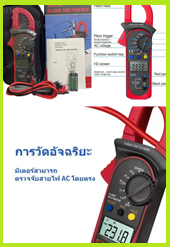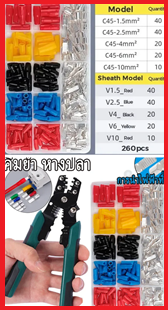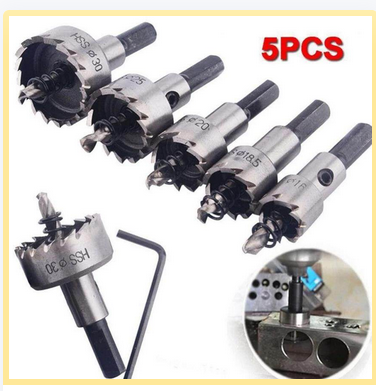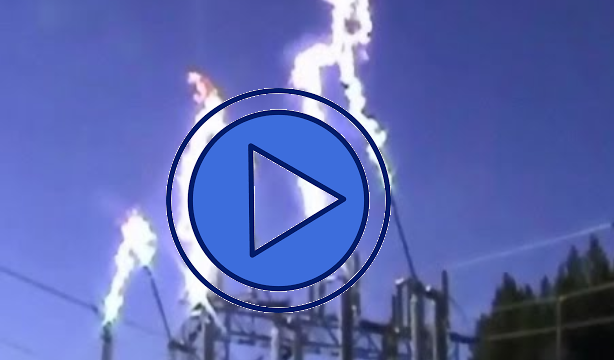What Is SF6? Sulphur hexafluoride.
SF6 is a gas that is used in electrical power equipment. It is colourless, odourless, non-flammable and chemically stable. This means that at room temperature it does not react with any other substance. Stability comes from the symmetrical arrangement of the six fluorine atoms around the central sulphur atom. And this stability is just what makes the gas useful in electric equipment. SF6 is a very good electrical insulator and can effectively extinguish arcs, which makes high and medium voltage apparatus filled with SF6 highly popular. SF6 can be found in millions of electric apparatus all over the world; electrical equipment containing SF6 is a large export article.
SF6 is formed by a chemical reaction between molten sulphur and fluorine. Fluorine is obtained by the electrolysis of hydrofluoric acid (HF). Pure SF6 is not poisonous. The gas is not dangerous to inhale, provided the oxygen content is high enough. In principle you can inhale a mixture of 20% oxygen and 80% SF6 without danger. SF6 is about 6 times heavier than air. That means that it may collect in cable ducts or at the bottom of tanks. The gas is not dangerous to inhale but if it does accumulate where people work, there is a risk of suffocation due to the lack of oxygen. SF6 is a non-flammable gas that is used in electrical apparatus. SF6 is not poisonous.
Where and How Is SF6 Used?
SF6 is used as an insulating gas in substations, as an insulating and cooling medium in transformers and as an insulating and arc quenching medium in switchgear for high and medium voltage applications. These are all closed systems which are extremely safe and unlikely to leak.
In electrical power systems, high and medium voltage switchgear is required to cut off the power in case of a fault, in order to protect people and equipment. When power is switched, an electric arc strikes between the circuit-breaker contacts. Breakers filled with SF6 are electrically insulating and effectively control arcing. Gas isolated substations are mainly found in urban areas where you want them to take up as little room as possible and often integrate them into buildings. These substations reduce the magnetic field and remove the electrical field completely. This is a real advantage for installers, maintenance personnel and people who live in the vicinity of substations.
SF6 also is used in other ways. Mixed with argon, it can be used in insulated windows. SF6 is used in the metal industry, for example, when casting magnesium. Eye surgeons use SF6 as a cooling agent in operations. SF6 can also be used as a fire extinguishing agent because it is non-flammable and cooling. In electrical applications, SF6 is only used in sealed and safe systems which under normal circumstances do not leak gas. SF6 is collected and recycled if a piece of equipment or a substation needs to be opened.
What Is the Benefit of SF6?
There are two reasons for using SF6 in electrical equipment: SF6 provides extremely good electrical insulation and very effectively quenches electric arcs. These properties of SF6 make it possible to build electrical equipment and apparatus that are compact, use a small amount of material, are safe and will last a long time. At normal atmospheric pressure, SF6 has a dielectric withstand capability that is 2.5 times better than air. Usually the gas is used at 3-5 times atmospheric pressure and then the dielectric properties are ten times better than for air.
SF6 insulates so well because it is strongly electronegative. This means that the gas molecules catch free electrons and build heavy negative ions, which do not move fast. This is effective against the creation of electron avalanches which may lead to flashovers. SF6 effectively controls circuit-breaker arcs because it has excellent cooling properties at temperatures (1500-5000 K) at which the arcs extinguish (the gas uses energy when it dissociates and therefore produces a cooling effect). High-voltage switchgear with SF6 is in principle alone on the market and the volume of medium-voltage switchgear with SF6 is large. Complete gas insulated substations, GIS or RMU, are used where space is restricted or the environment is severe. They are virtually maintenance-free. Electrical equipment filled with SF6 has been in use for about 40 years and the service experience is very good. SF6 has a very high dielectric withstand capability. SF6 effectively quenches arcs in circuit breakers. SF6 apparatus is compact and almost maintenance-free. SF6 equipment is extremely safe in operation and for users.
Are there Any Alternatives to SF6?
High-voltage circuit breakers filled with SF6 are able to cope with higher unit voltage than any other technique. Therefore, SF6 circuit breakers require fewer breaking units in series than air or oil-filled breakers. SF6 circuit breakers for medium voltage have considerable advantages compared to the alternatives. SF6 substations can be built as totally closed systems which provide the highest levels of operational and user safety.
The designs require only little material; all SF6 apparatus are compact. Compared with electrical apparatus without SF6, the environmental impact is low. Especially if you take into consideration every environmental impact “from the cradle to the grave“, that is, from manufacturing, installation, operation and maintenance all the way to final scrapping (when scrapping equipment , all the SF6 is recovered). So SF6 has many important advantages while currently available alternatives represent a return to older and inferior technology.
Without SF6, we would have a bigger impact on the environment as the alternatives require more space, are less safe and affect the environment more for installers, service personnel and people who live in the area.
Compared to designs that do not use SF6, the impact on the environment is low. Without SF6, we would have a less safe working environment for installation, operations and service personnel.
Is SF6 Dangerous?
Since SF6 came into use, nearly 50 years ago, a small amount of gas has leaked into the atmosphere. Currently there area round 0.000´000´000´003 parts (by volume) of SF6 in the atmosphere. The stability of the gas means it will stay in the atmosphere for a long time.
Some gases that are released destroy the ozone layer. Thinning of the ozone layer means that more ultraviolet light can get to the ground, increasing the risk of skin cancer. The gases that affect the ozone layer all contain chlorine. SF6 does not contain any chlorine and does not affect the ozone layer. The term “greenhouse effect“ is used to describe that the atmosphere is slowly warming up due to man-made gas emissions. Some gas molecules in the atmosphere, principally carbon dioxide (CO2) and methane (CH4) reflect long wave-length heat radiation from the earth so that heat remains trapped in the atmosphere instead of disappearing into outer space.
The SF6 molecule is very reflective and contributes to the greenhouse effect. But the concentration of the gas is extremely low (0.000´000´000´003 by volume). This means that the contribution of SF6 to the man-made greenhouse effect is very little, less than 0.1 percent of the total effect. This should be compared with carbon dioxide CO2 which contributes about 60%. SF6 does not destroy the ozone layer. The contribution of SF6 to the greenhouse effect is less than 0.1 percent of the total that mankind generates.
Can SF6 Create Any Dangerous Substances?
Despite the fact that the SF6 gas is very stable, it will partly decompose in association with electric discharges and arcs, for example, in a breaker. Then, gaseous and solid decomposition products are produced. Normally the level of gaseous decomposition products is kept low through the use of absorbers built into the switchgear.
In large concentrations, the decomposition products are corrosive and poisonous. Therefore, there are established routines for service personnel when opening SF6 filled equipment for maintenance or scrapping. The solid decomposition products are mainly metal fluorides in the form of a fine grey powder. The powder only appears where arcing has occurred, for instance in used circuit breakers. The powder can be easily taken care of as separate waste.
The decomposition products are reactive, which means that they will decompose quickly and disappear without any long-term effect on the environment. SF6 is however mostly in hermetically closed systems. That means the gas is contained for the entire life time of the equipment, there is no need to open the equipment for servicing and no gas can escape. In SF6-filled switchgear-decomposition products are created – they can be handled safely and are harmless to the environment. Most SF6 gas is collected and recycled.
Today‘s SF6 apparatus is very gas-tight and in normal operation only a small amount of the gas can leak out. The gas is monitored continuously, and any leakage would be discovered at an early stage. SF6 apparatus does not need much maintenance. In the rare case a gas-filled section of apparatus needs to be opened, the gas is pumped into a container. After filtering, the gas can be used again and put back into the apparatus. There is also equipment which allows us to handle gas in large quantities (GIS substations) and also in smaller quantities, for example, in single circuit breakers.
Contaminated SF6 can be cleaned and used again. If the gas is not required any more, it can be destroyed by heating it together with limestone in a high temperature kiln. In this process it is being transformed into the environmentally harmless and non-toxic natural products gypsum and fluorspar. It is usual policy that no SF6 gas should be released into the atmosphere. This applies to every time SF6 apparatus is serviced, maintained or scrapped. Most equipment is also designeds so that gas handling is as easy as possible; we recommend suitable equipment and routines for the handling of the gas; and we offer to take care of the gas when equipment with SF6 is to be scrapped. SF6 can be cleaned and used again. SF6 can easily be destroyed.
Most SF6 users policy is that no SF6 gas should be released when equipment is erected, serviced or scrapped.
Responsibility for the Environment.
SF6 is a gas that, amongst other things, is used in electrical equipment. The gas is very stable and very effective for electrical insulation and arc quenching and is totally harmless to the environment. SF6 is used in electrical power equipment all around the world; SF6 contributes to ensuring that the consumer gets electricity safely and cheaply. It is the stability of SF6 that makes it so useful in electrical apparatus. That stability also means that SF6, when released, could contribute to the greenhouse effect. But very little is released so the contribution to the greenhouse effect is extremely low. Calculations show that SF6 contributes less than 0.1 percent to the total greenhouse effect.
========================================================
================= ยูทุปของ 9engineer ,com ===================
คลิปที่น่าสนใจจัดทำโดย 9engineer.com ภายใต้ชื่อช่องTechnology talk Channel
1. วงจรและวิธีการสตาร์ทแบบไดเร็คออนไลน์ DOL
2. วงจรควรคุมการกลับทางหมุน
3. วงจรและวิธีการสตาร์ทแบบสตาร์ เดลต้า Y-D Starter
4. การสตาร์แบบออโตทรานส์ฟอร์เมอร์ Auto transformer starter
5. การต่อขดลวดมอเตอร์ อย่างไรไม่ให้เกิดการใหม้หรือเสียหาย
6. การเช็ตโอเวอร์โหลดรีเลย์
7.การเช็ตโอเวอร์โหลดรีเลย์กับมอเตอร์ที่มีเซอร์วิสแฟคเตอร์
8.รีเลย์กับคนแทคเตอร์ต่างกันอย่างไร
9.อื่นๆ
**** นายเอ็นจิเนียร์ขอสงวนสิทธิ์รับรองความถูกต้อง โปรดใช้วิจารณญาณในการรับข่าวสารข้อมูล












